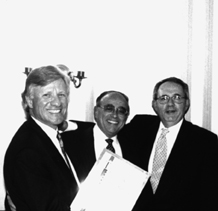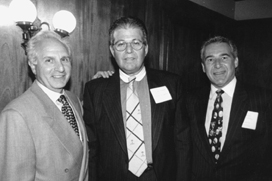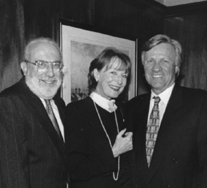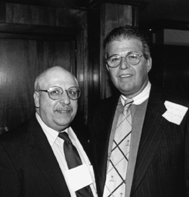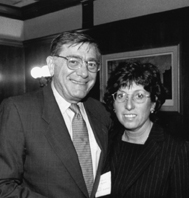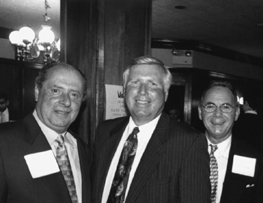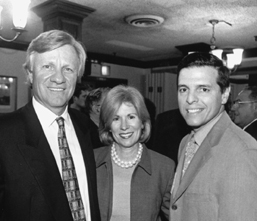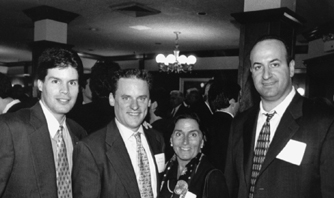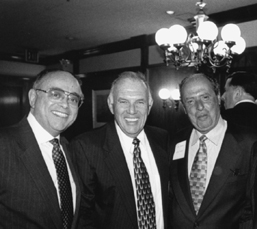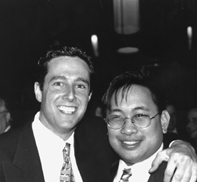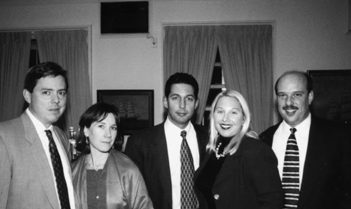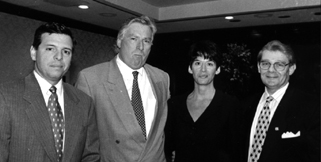Early last month, an analyst at C.E.Unterberg, Tow- bin doubled his price target for a stock called Puma Technology, a communications software publisher. Puma Technology was planning an acquisition, putting it on course to duplicate Phone.com, a successful industry peer. That company has seen its stock price rise from about $30 to $230 since its initial public offering in June. (At press time, the acquisition was still pending.)
In what is becoming standard practice at many broker dealers, Unterberg Towbin launched a team-based sales assault on its buyside clients to spread the word of a potential new Phone.com success story. Sales trading coordinated its efforts with research and equity sales.
The strategy worked. By the end of the day, Puma had shot up $4.50, or about 25 percent from its prior-day close of $17 3/16.
"You can be sure that our sales traders made sure that the trading desks at major accounts had that message at the same time as the research sales force and the institutional sales force was delivering that message to their counterparts [at the same accounts]," said Mitch Meisler, Unterberg Towbin's executive responsible for coordinating the sales efforts of the three divisions. "As long as I've been in the business [team selling] has been the holy grail. It's what you hope for. It's what you aspire to."
Hoping to capitalize on the team-based sales trend, Thomson Financial's First Call has introduced an Internet tool called "Integrator" that supports a broker dealer's unified approach to account management. The product combines standard contact management software with database search capabilities. (Thomson Financial is the parent company of Securities Data Publishing, the publisher of Traders Magazine.)
The contact management application allows analysts, research salespeople and sales traders to access account information and to communicate with each other via notes. Contact management software is a staple among salespeople. ACT!, by Symantec, is the biggest seller in the U.S. of contact management software.
Integrator provides access to two types of databases: one with buyside contact data and another with institutional shareholdings data. The contact data includes the names of portfolio managers, analysts and traders at over 4,000 global institutions. Shareholding data consists of the securities holdings of those same money managers.
Both data sets have been on the market for years in various forms. Technimetrics and Nelson Information, both units of Thomson, sell the contact data. CDA Spectrum, also a Thomson unit, and Technimetrics sell the shareholding data.
The shareholdings database can be queried by the market capitalizations of the stocks. Queries can include the manager's investment style, such as growth or value and other queries can be by the sectors in which they invest, such as energy or healthcare; and by the global regions in which they invest. Users can also determine whether a money manager has been a buyer or seller of a particular stock over the most recent quarter.
Integrator's product manager John Murphy touts the ability of a sales trader to add a client's "interest list" to the system. An interest list includes those stocks an institutional trader owns and wants to monitor or those he doesn't own and may want to trade.
The product has been available since June and costs under $500 per user per month, according Murphy. Subscribers are likely to be small or medium-sized broker-dealers. Murphy says there are currently 400 individual users at "more than five" firms.
ABN Amro is one of those firms. It has deployed Integrator in its sales and research departments, although not in its trading department.
Brendan Toulose, an equity salesman in ABN Amro's New York office, says he gets the most from the shareholdings database, adding that a sales trader should as well.
"With the click of a mouse everything is there," he said. "Previously we had piles and piles of paper. Now if I want to find out what's in Scudder's Science & Technology Fund, for example, I just type in the request and click the mouse."
Toulose says he finds little use for the software's note-passing function as he is in constant contact with his firm's analysts. He hasn't found much reason to access the buyside contact data either.
Despite the exclusion of ABN Amro's sales traders from the product, industry executives say it is vital for the sales trader to be included in the research pitch. "In this world you want the message to get to the account," Meisler said. "Whether it gets to the ultimate trigger point from the trading desk or whether it goes in through the analyst or the portfolio manager, you want to have all sides armed with the information, so that one way or another the message has gotten through and someone can react."
Paul Mazzarella, the head of sales trading at Boston's Adams, Harkness & Hill, says the team-based approach is more often found at small shops like his.
"Adams, Harkness is not an execution firm like a Morgan Stanley or a Salomon Smith Barney," he explained. "But what we lack in capital we make up for in our ability to act quickly in the dissemination of information. We are nimble. Our research department keeps our sales traders informed. It is important to us that we are working on all cylinders to reach our customers."
Adams, Harkness does not use Integrator, but does use Spectrum shareholder data. ABN Amro's Toulose uses both, but calls Integrator's technology "superior."
That technology is known as Internet database publishing. Data is exported from a database to the HTML, or hyper-text mark-up language, document format. HTML is the coding used to create web pages. Web surfers encounter database publishing when calling up news stories on the websites of media companies or when searching a site for cheap airfares, for example.
First Call's publishing system for Integrator is based on Microsoft technology and runs on its Windows NT operating system. A sales trader uses his browser (Explorer is recommended) to access the Integrator application at a First Call website.
Working behind the scenes in support of Integrator is Microsoft's web server software, Internet Information Server (IIS) 4.0. Web server software takes requests from Web browsers to download HTML pages. IIS 4.0 works in conjunction with a Microsoft innovation called Active Server Pages. It executes scripts, or small programs, that automate database searches.
The data itself resides on Microsoft's SQL Server 6.5, a database management system (DBMS). A DBMS is software that controls the organization, storage, retrieval, security and integrity of data in a database, according to CMP's TechEncyclopedia. It accepts requests from applications like Integrator and instructs the operating system to transfer the appropriate data.
"The sellside wants to harness technology that can help it contact its counterparts on the buyside with lightning speed and with impact," Unterberg Towbin's Meisler said. "It [Integrator] helps leverage the efforts of the sales force and the sales traders to reach accounts that much quicker… that's what it's all about."





